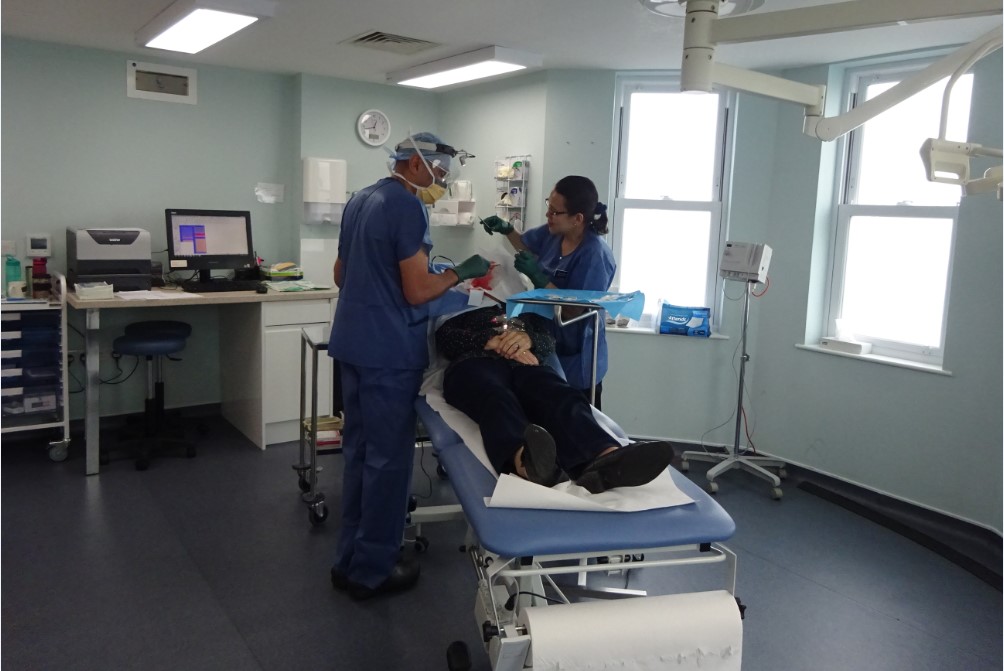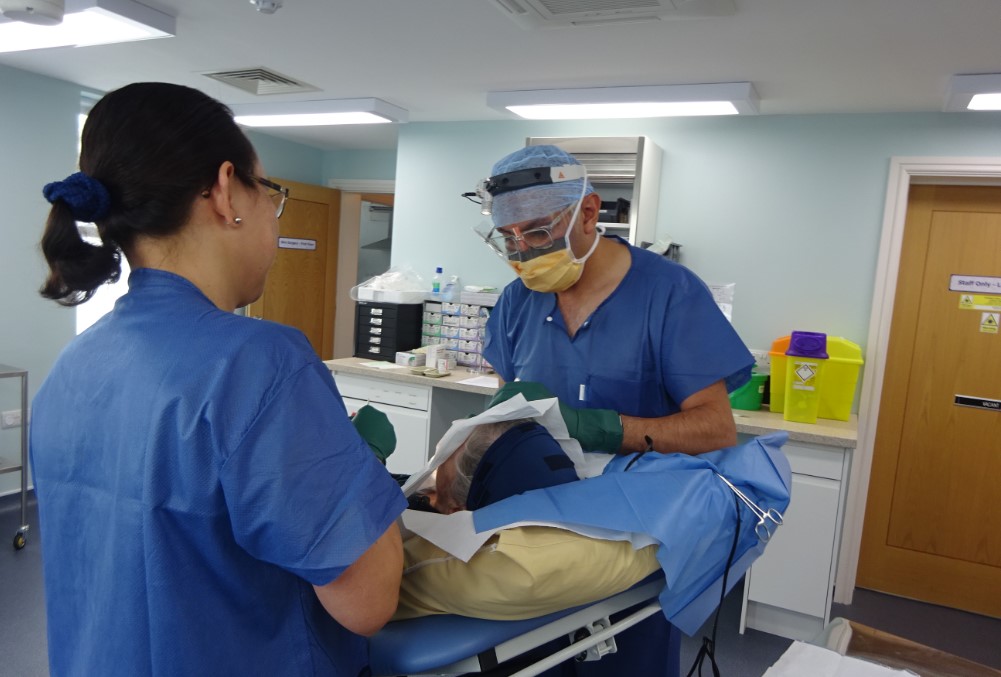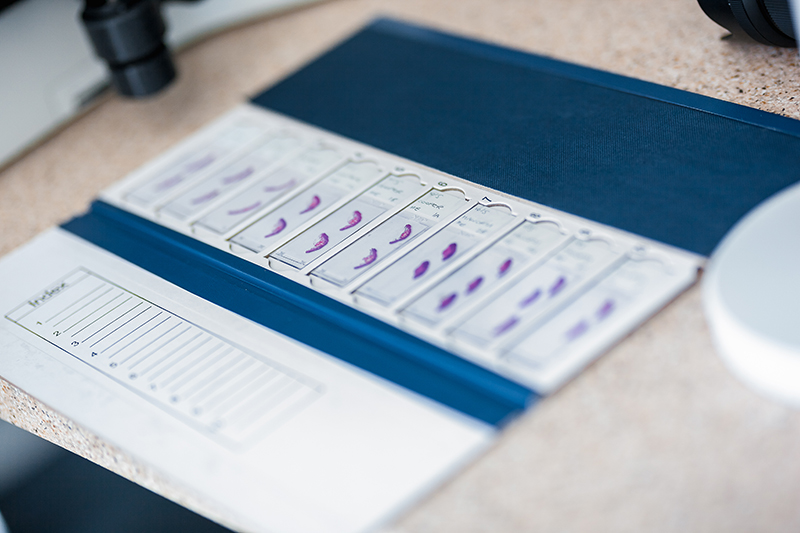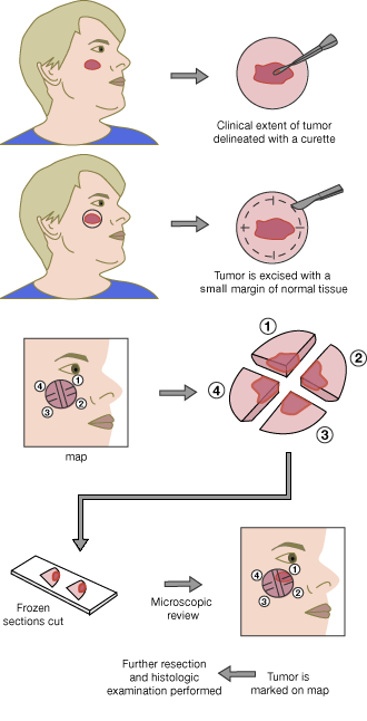This cutting-edge treatment requires specially trained dermatologists and can be used to remove most skin cancers, except for melanoma.
It involves removing the cancer and a thin layer of skin from underneath it. The layer of skin is then examined through a microscope to ensure that no cancer cells are remaining. If there are still cancer cells, then more layers of skin will be removed until there is no more evidence of any cancer remaining in the site.


This procedure minimizes the amount of normal tissue that needs to be removed around the cancer – this means that there is less scarring and disfigurement than more traditional surgical methods and it provides the best foundation for reconstructions. It is often used on the face.
The procedure can be fully completed in a day and all malignant tissue is removed, so there is no need for further surgery.
The cure rates approach 99% for most primary (untreated) cancers with a slightly lower cure rate for secondary or recurrent (previously treated) cancers. This is better than for any other method of removing skin cancer.



